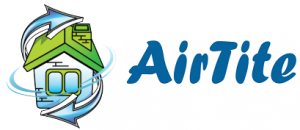FAQ
Frequently asked questions.
What is a Duct Test?
This type of test will determine the amount of air leakage in the duct system, leakage reduces the energy efficiency of the HVAC System.
What is a Blower Door Test?
This test gives a good base line of how well the home is sealed. Once tested, a homeowner can then make minor changes in the weather stripping or caulking to help make it more energy efficient.
Why is the Local Municipality making me get this test?
The new building code that is moving into effect around the country has requirements for this type of testing to be completed. These types of test are a good move towards keeping our new homes more energy efficient.
State Requirements:
ABSTRACT
The 2012 International Energy Conservation Code (IECC) requires new homes and major renovations to have a pressure test of the building envelope and duct systems that are located outside of the thermal envelope. Testing is vital as leaky homes and ductwork often represent major sources of energy waste in homes. Many states will likely adopt the 2012 IECC over the next few years. However, many states currently lack the capacity to meet the testing requirements mandated by the 2012 IECC. To ensure code adoption and compliance, it is critical that states build lasting infrastructure to offer testing services and that these services be available at a competitive price. If not, there could be a serious threat of a backlash against the testing provisions of the 2012 IECC, or perhaps, the entire code.
In 2011, Georgia implemented a building energy code that requires duct and building envelope leakage testing (DET) and addresses performance testing issues left unresolved by the IECC such as who is qualified to perform the required testing, where should the testing results be recorded, how do the testing requirements apply to upgrades and renovations to existing homes and duct systems, should there be special considerations for multifamily buildings (e.g., sampling), and what is an acceptable and effective duct sealant. This case study addresses key issues such as the appropriate experience and training required for DET professionals, acceptance of existing national testing certifications and effective outreach strategies to recruit and train DET professionals.
Alabama is adopting the 2009 International Residential Code (IRC) including the energy chapter (Chapter 11) as the state residential energy code. This code is expected to go into effect in the Spring of 2012.
Code Section: M1601.4.1.1
Checklist Item # [FR14] [FI4]
Code Value Description Rough-in total leakage w/o air handler: ≤ 4%;
Rough-in total leakage w/ air handler: ≤ 6%;
Post-construction leakage to outdoors: ≤ 8%;
Post-construction total leakage: ≤ 12%
Effective July 1, 2013, the ducts and air handler, if not completely located inside the conditioned spaces, must be tested for tightness. Testing can either occur at rough- in or at post-construction. Any one of the above requirements must be met.
Building Envelope.
Code Section N1102.4.2, N1102.4.2.1
Checklist Item # [IN12]
Code Value Description ACH50 < 7
Buildings must either be tested for tightness with a blower door and meet the requirement listed above or undergo a rigorous visual inspection of proper air-sealing and insulation as detailed in Table N1102.4.2 of the 2009 IRC.
